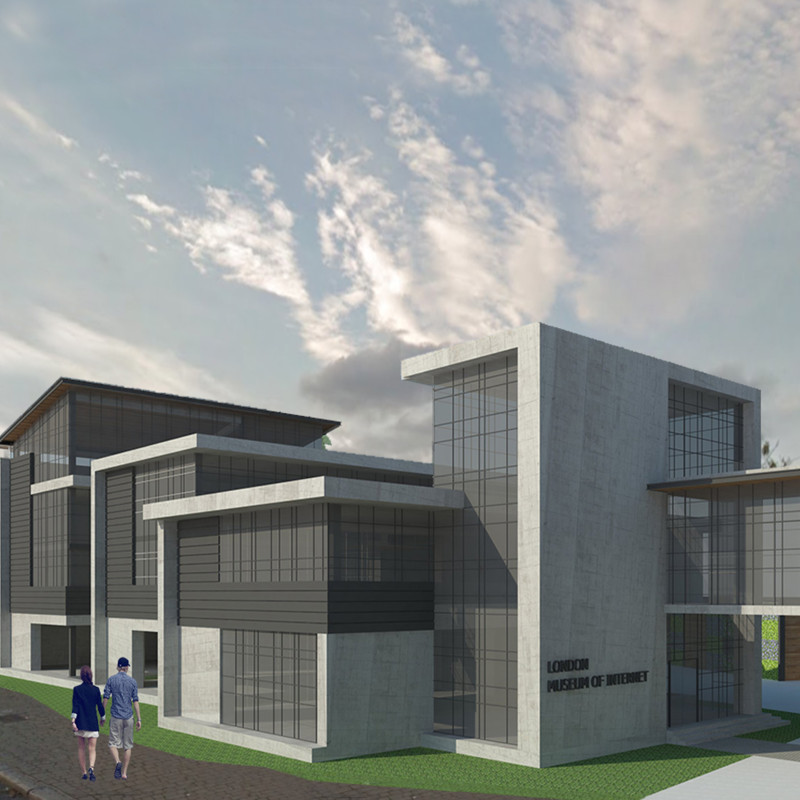5 key facts about this project
## Overview
The London Internet Museum is situated in a historically significant area, blending contemporary architectural design with elements of the past to represent the essence of the internet. The project integrates various functional spaces to embody the concept of interconnectedness, reflective of the digital environment. The architecture prioritizes both utility and user experience, utilizing a framework that facilitates movement and interaction among diverse visitor activities.
## Architectural Integration and Spatial Organization
The design concept emphasizes the internet as a network, expressed through the spatial arrangement and connectivity of the museum's structure. A central atrium serves as a pivotal connection point, linking the historic station with modern extensions and guiding visitor movement throughout the facility. The museum's layout enhances visitor engagement by creating shared circulation pathways that unify the different components of the space.
The building arrangement includes essential visitor services on the ground floor, such as a café and a gift shop, complemented by views of landscaped gardens. The first floor comprises libraries, classrooms, and exhibition areas designed to foster learning and community interaction. Subsequent levels include multipurpose classrooms, private meeting rooms, and an auditorium, emphasizing adaptability for educational and public programs.
## Material Selection and Sustainability
Material choices reflect a commitment to sustainability and aesthetic cohesion. Concrete is utilized for its durability, while glass elements enhance transparency and visual connectivity with the outdoor environment. The incorporation of Swisspearl fiber cement for facades ensures both functional performance and visual appeal, aligning with sustainable design principles. Additionally, wood elements are integrated into interiors and roofing, contributing warmth and a natural quality to the modern aesthetic. This carefully curated material palette enhances the overall visitor experience by creating inviting and engaging spaces.






















































